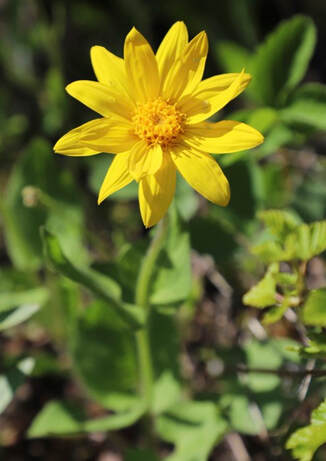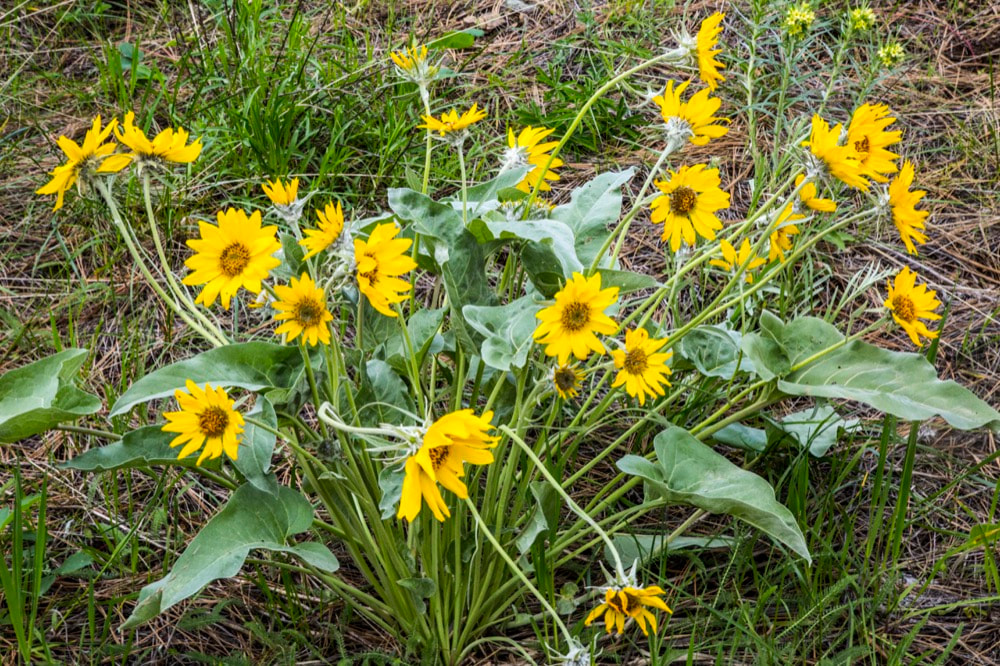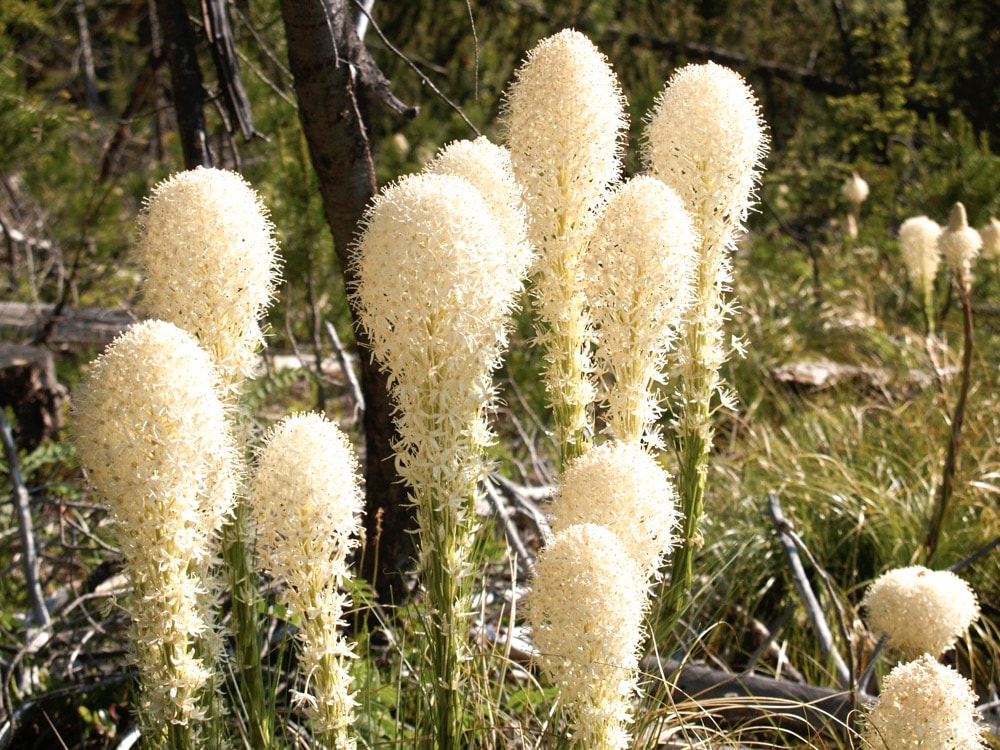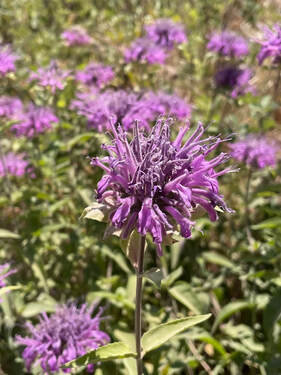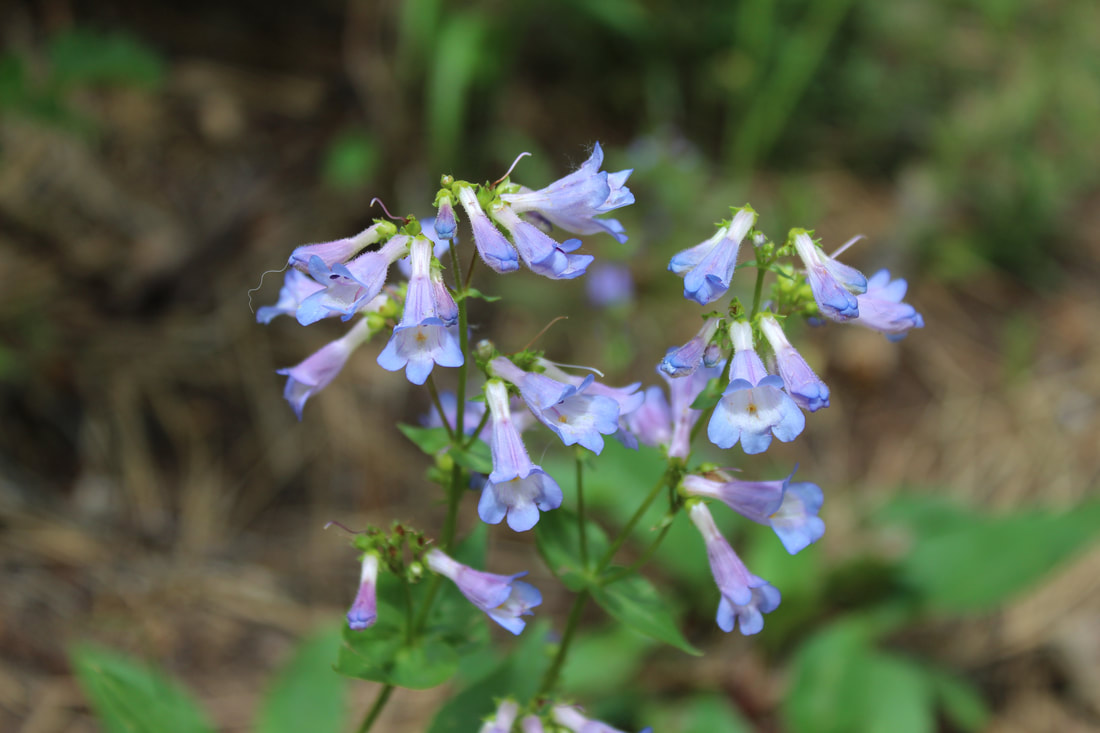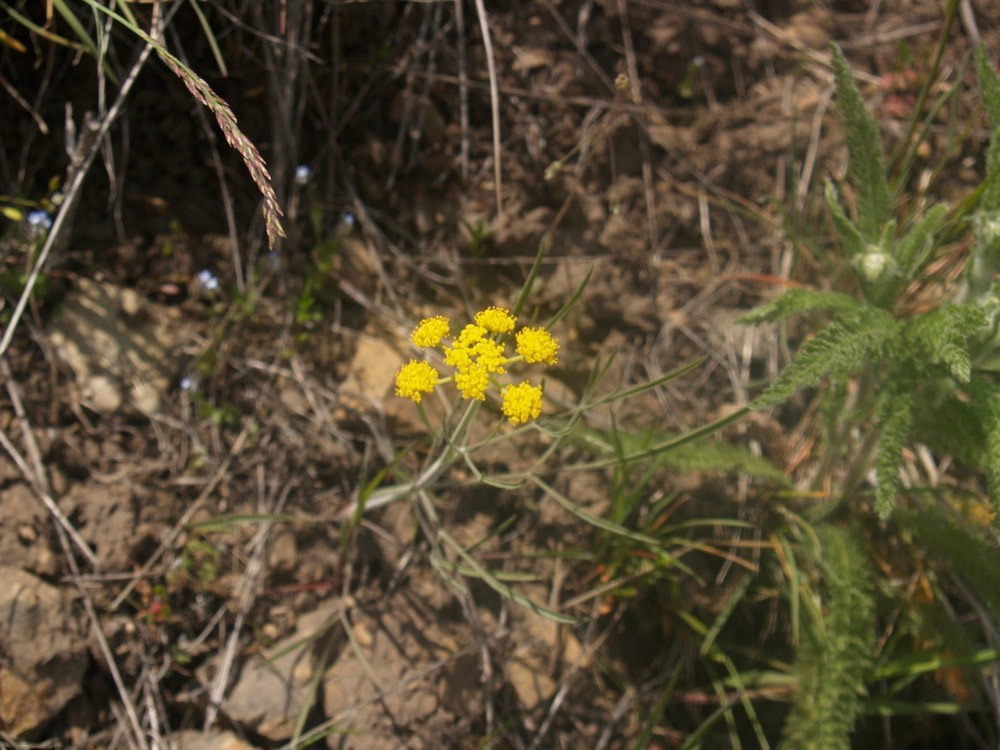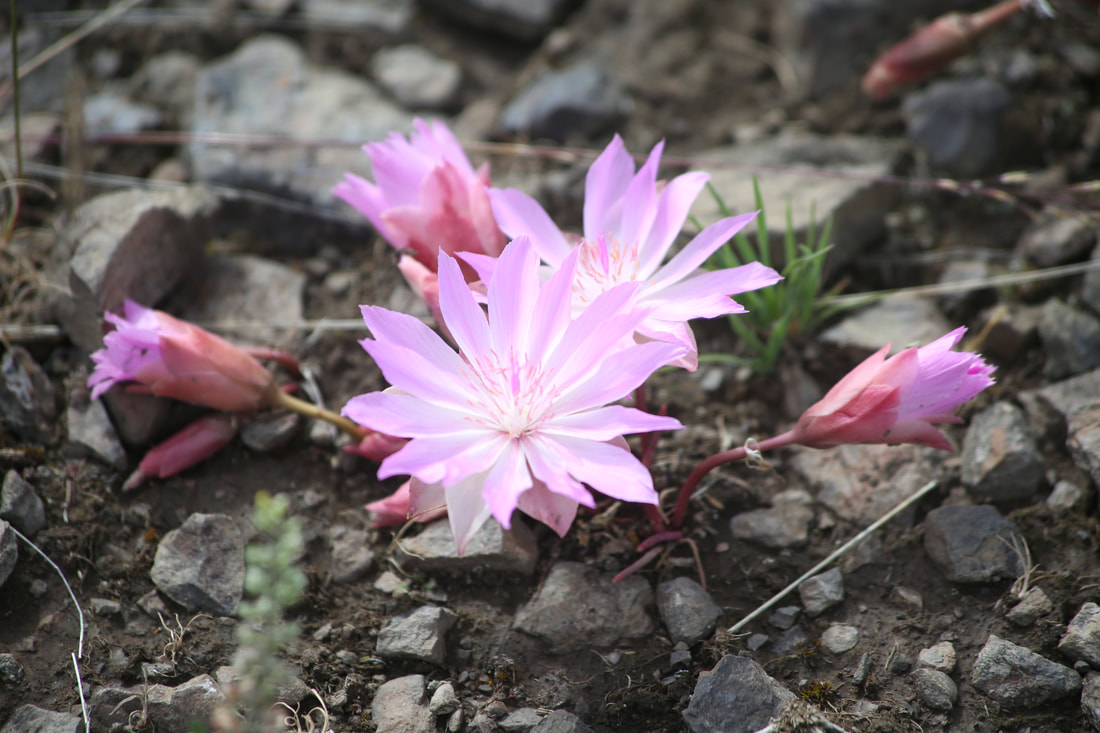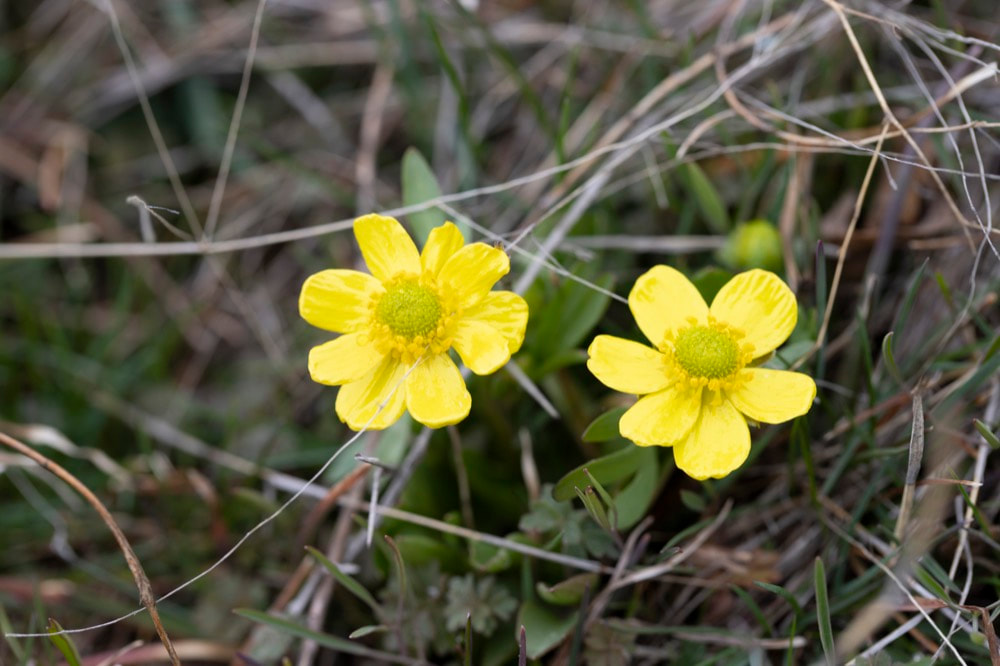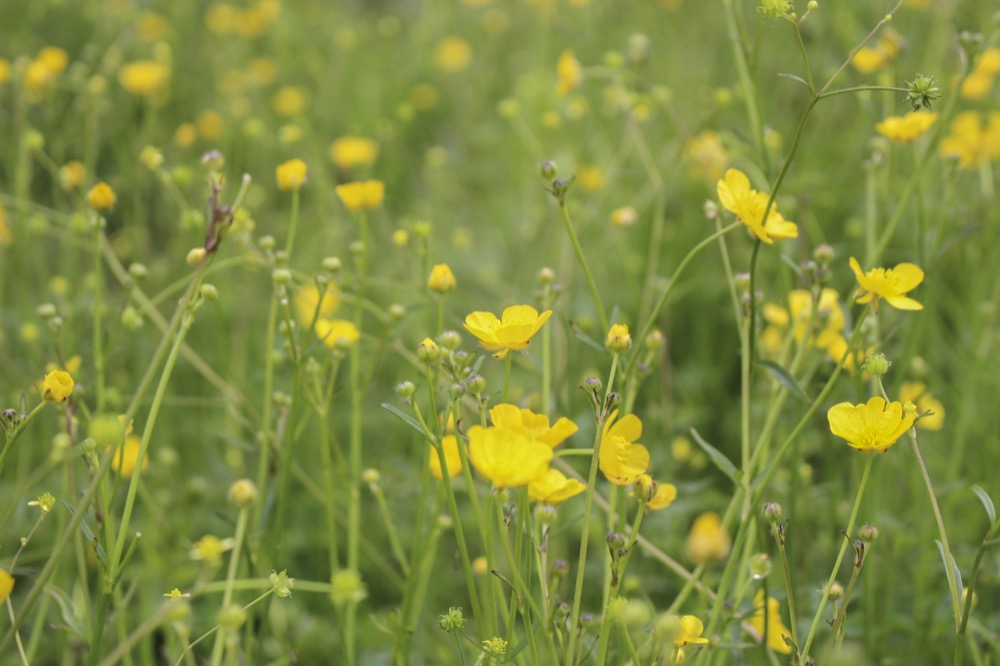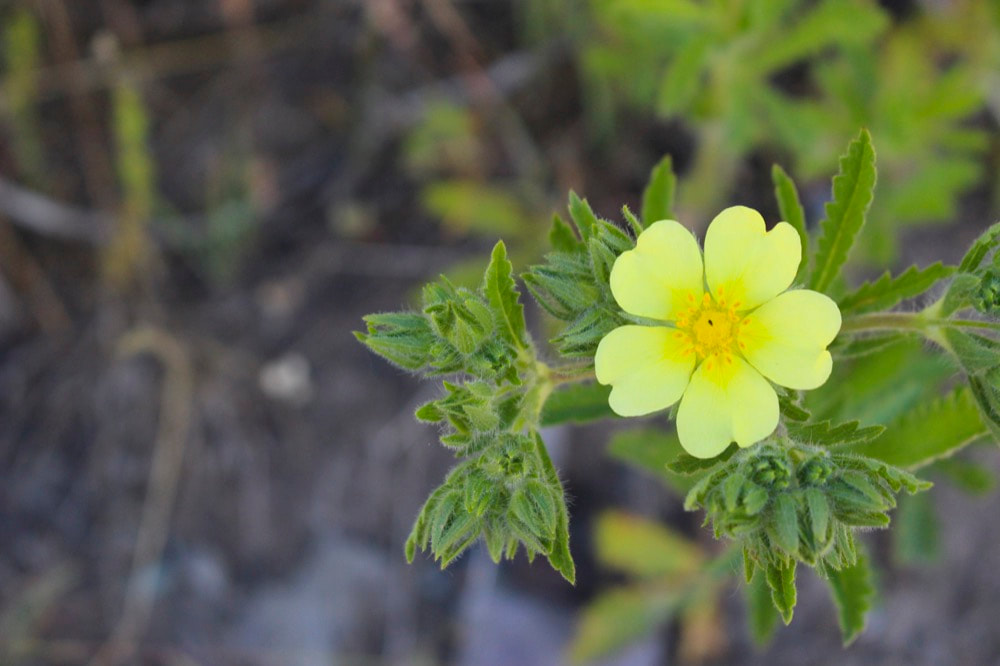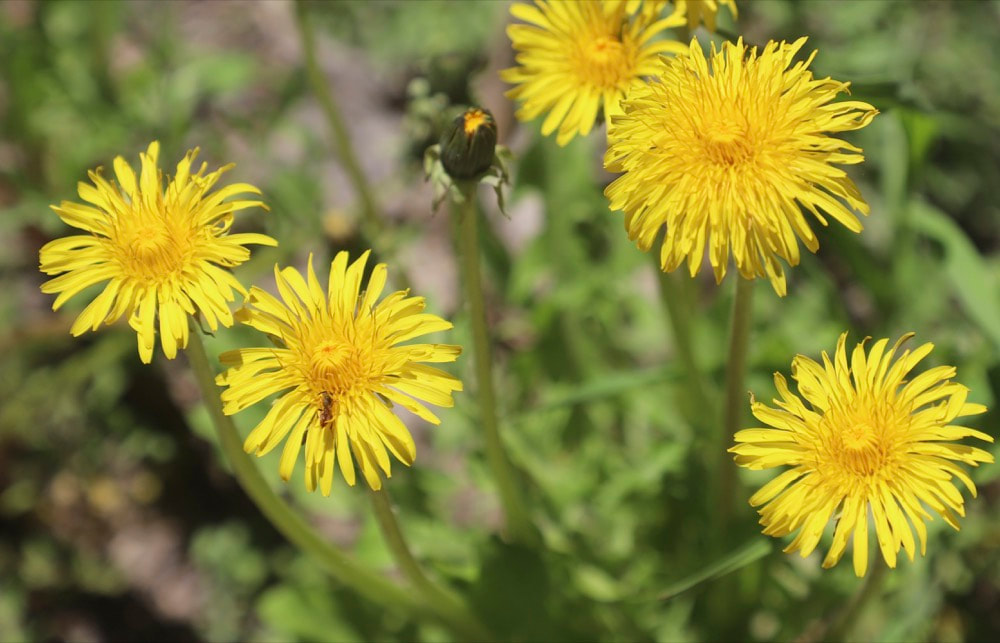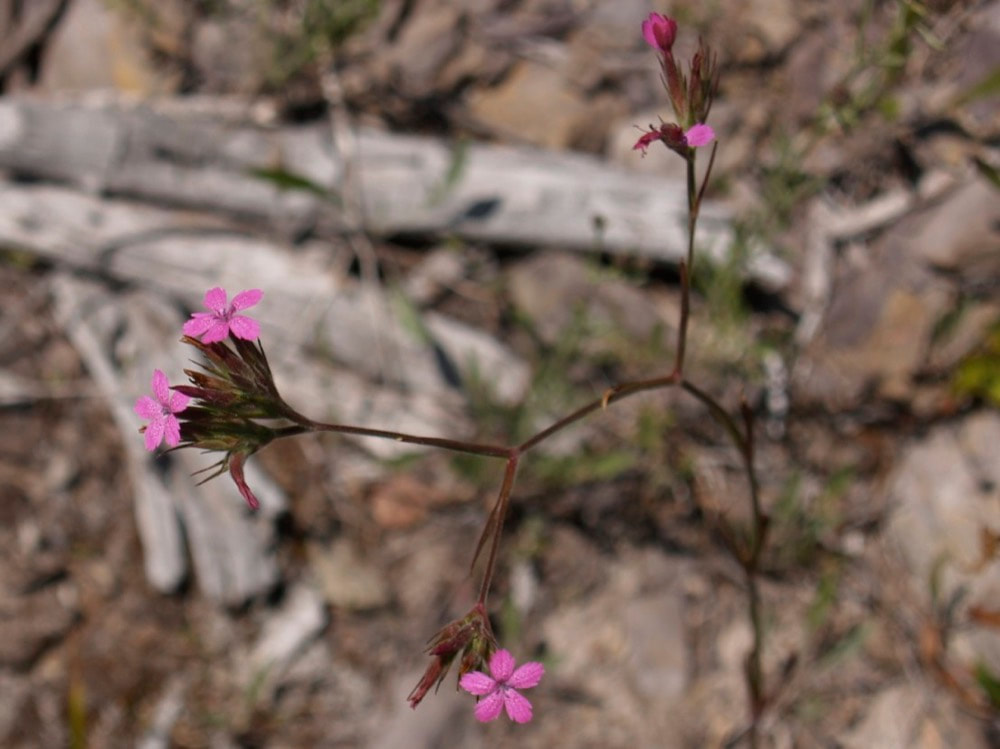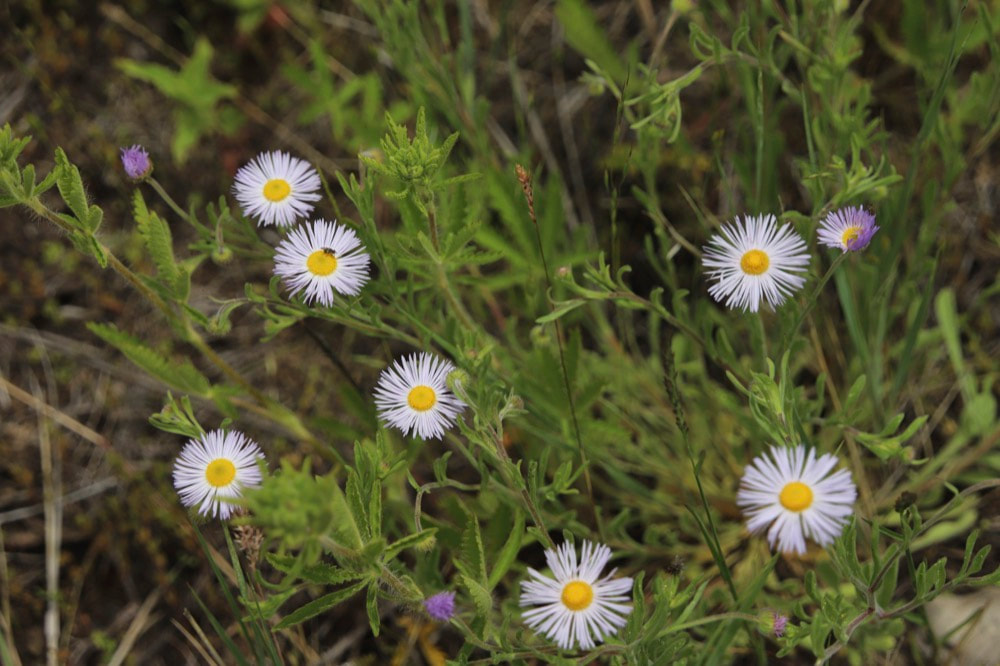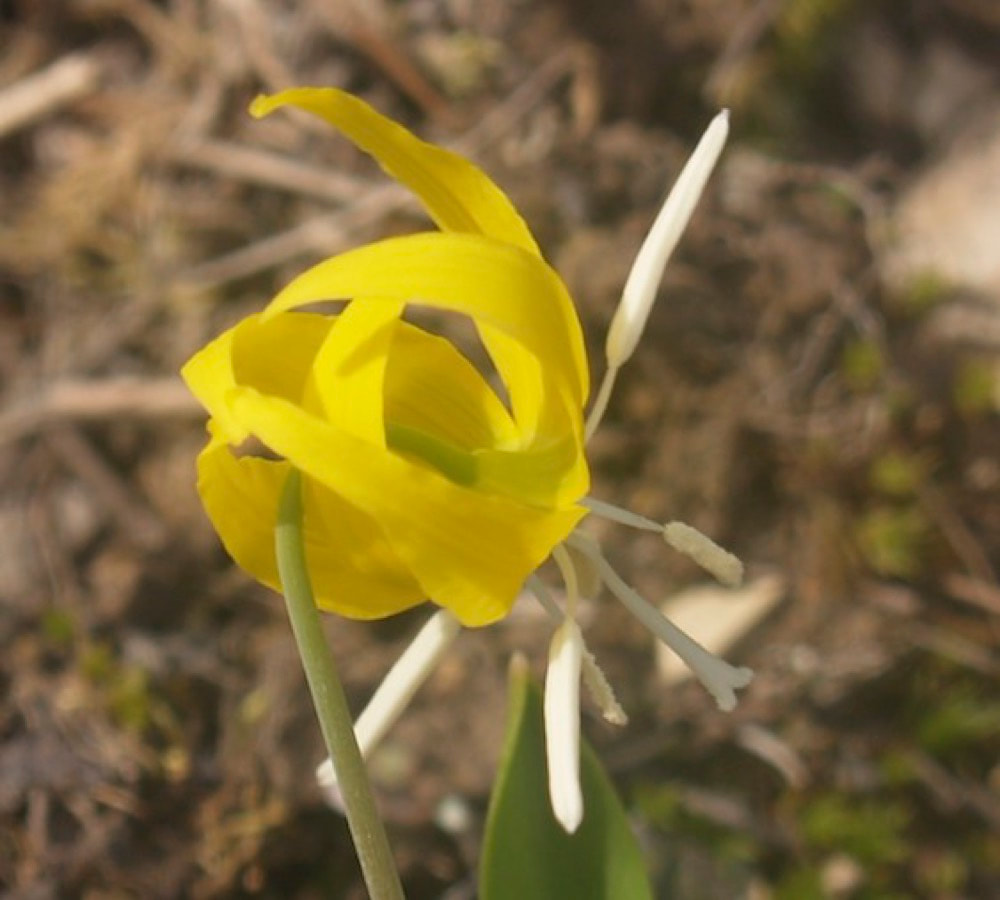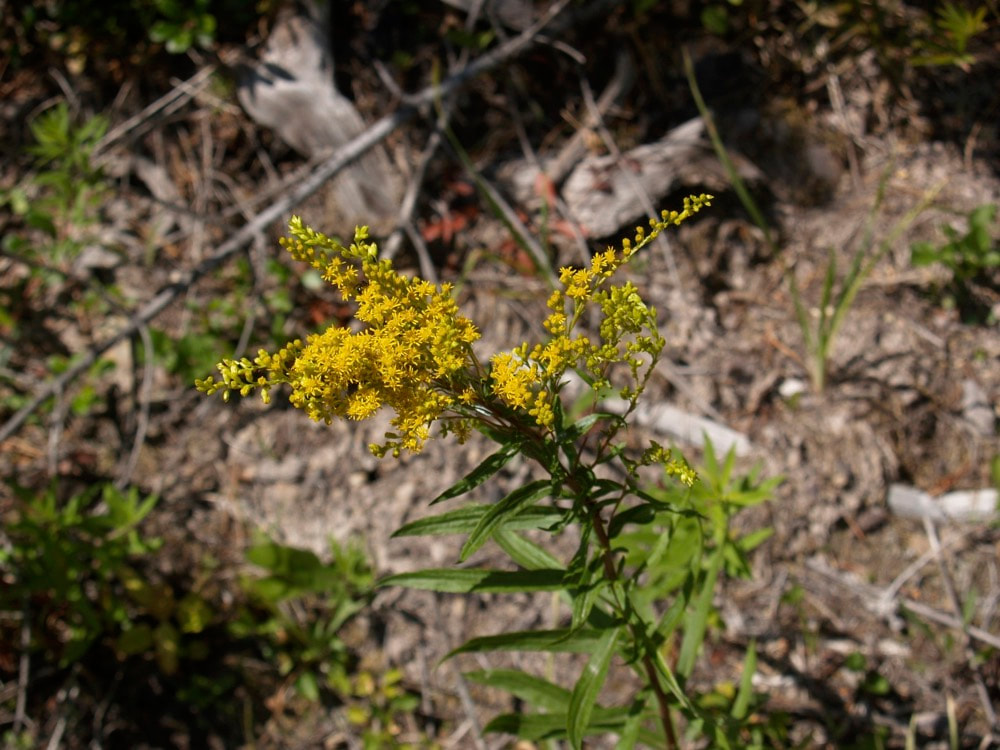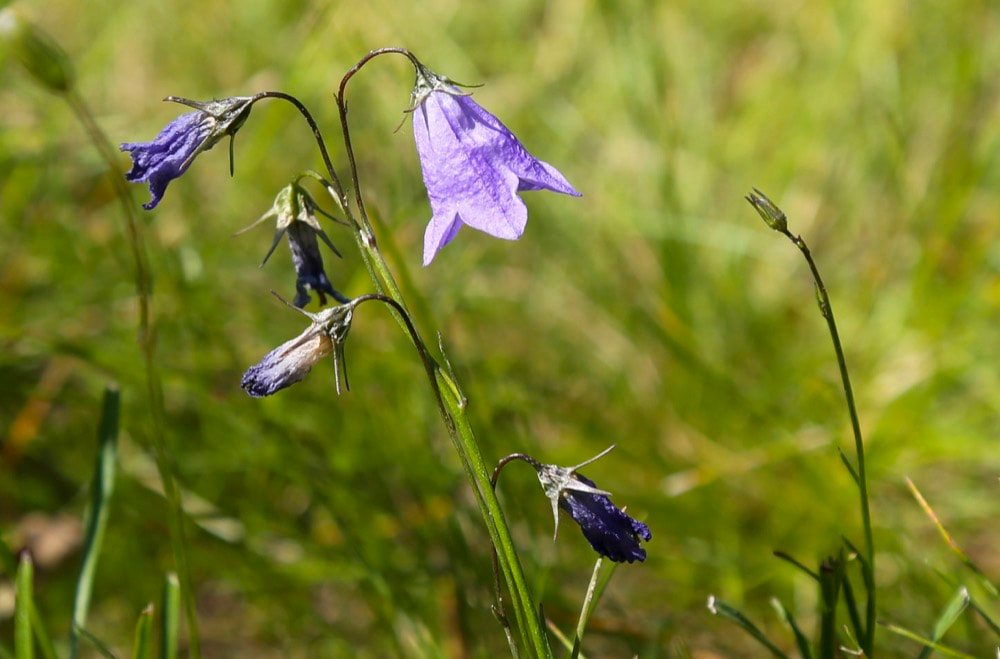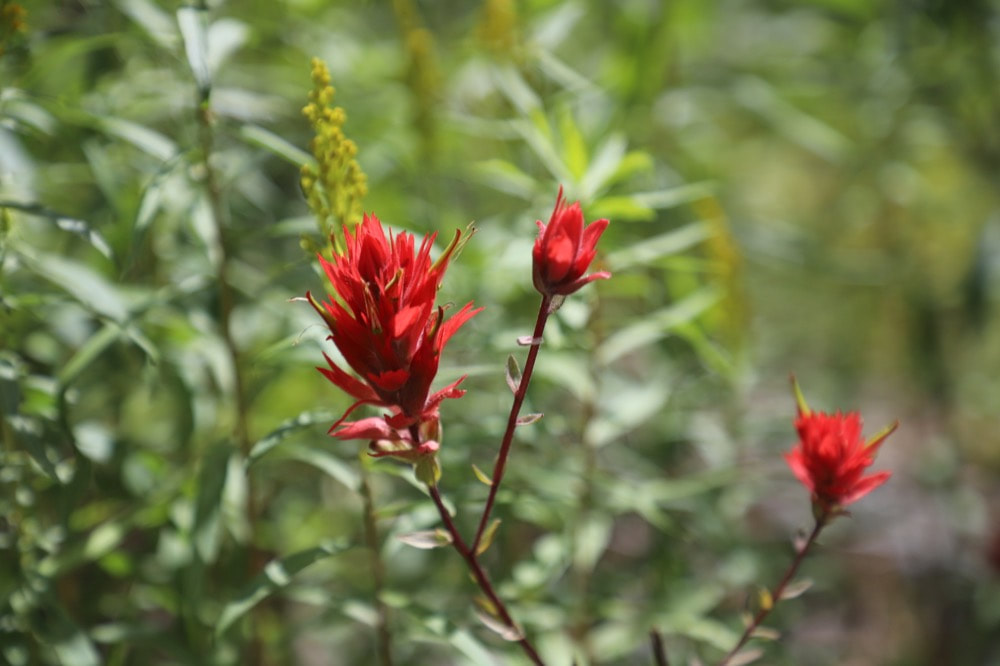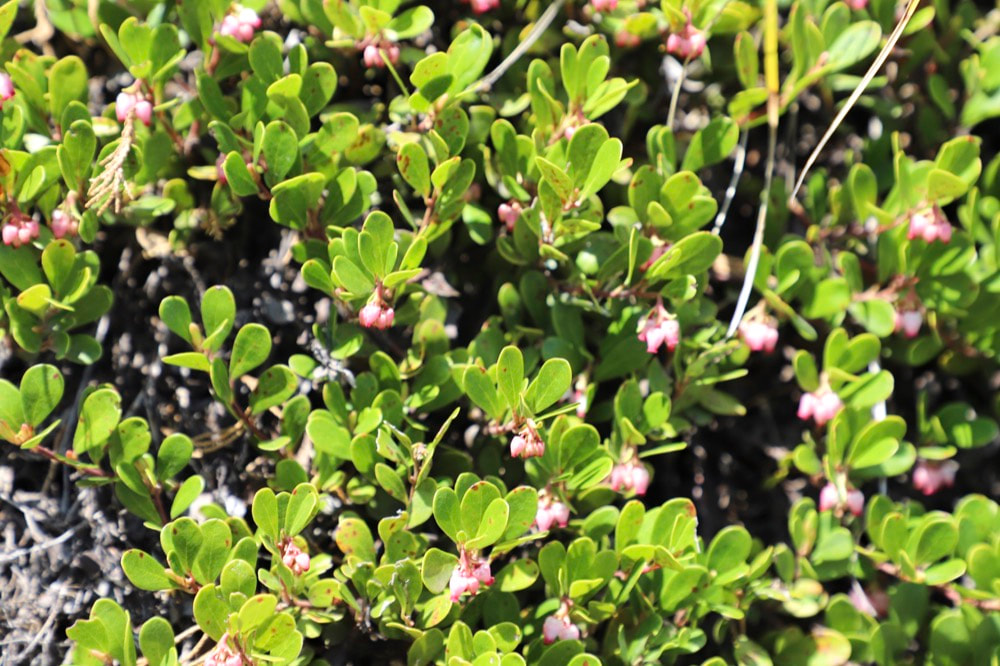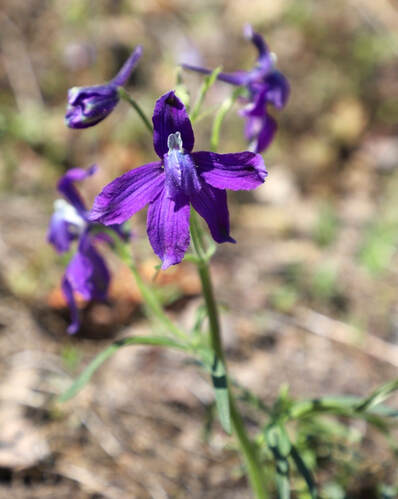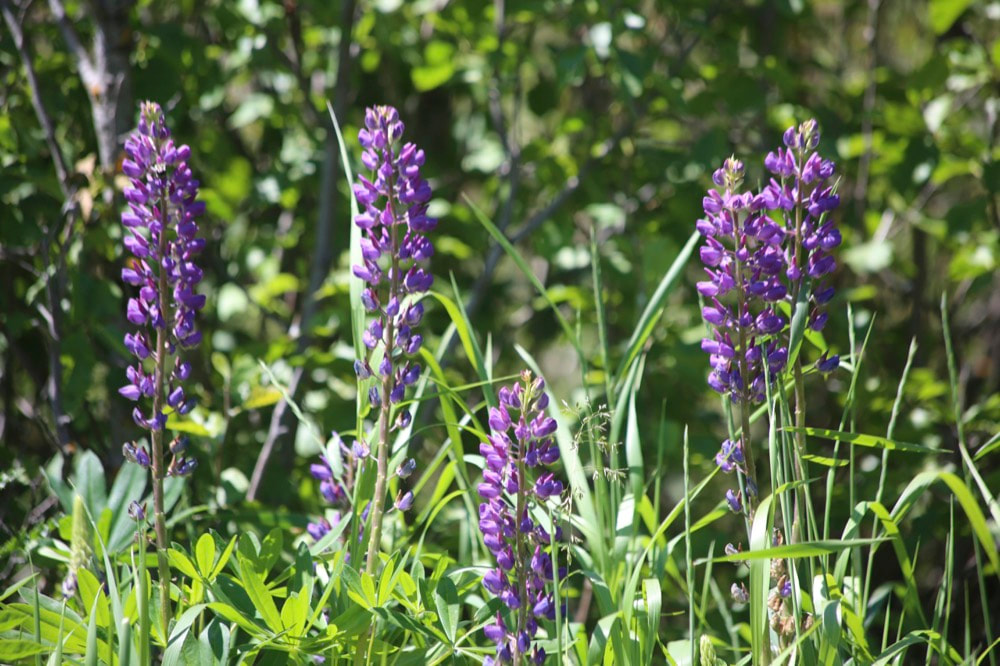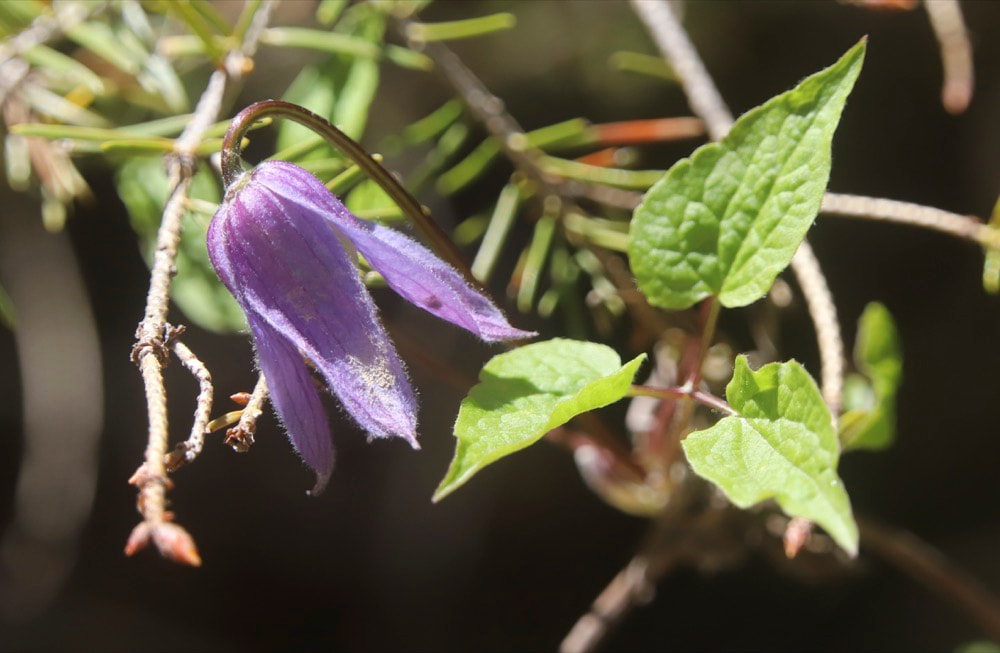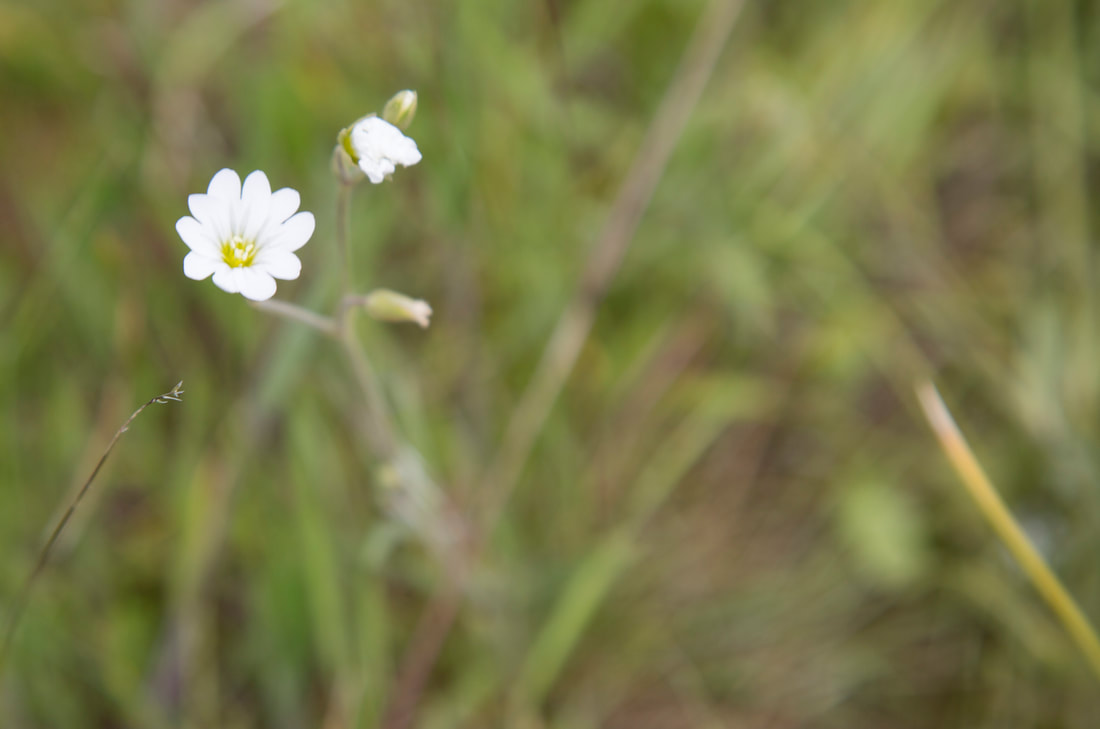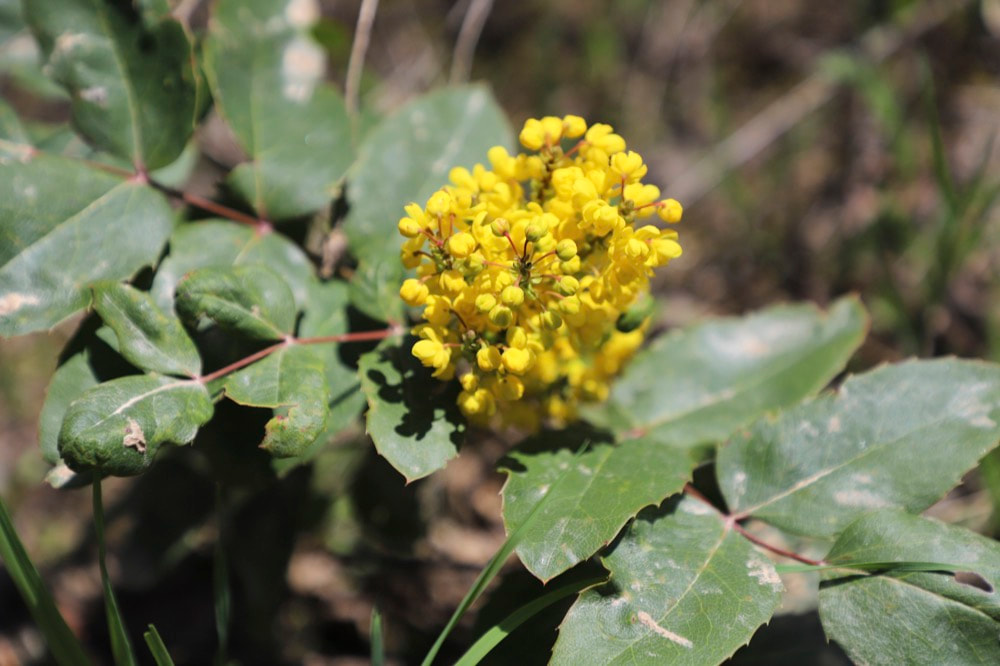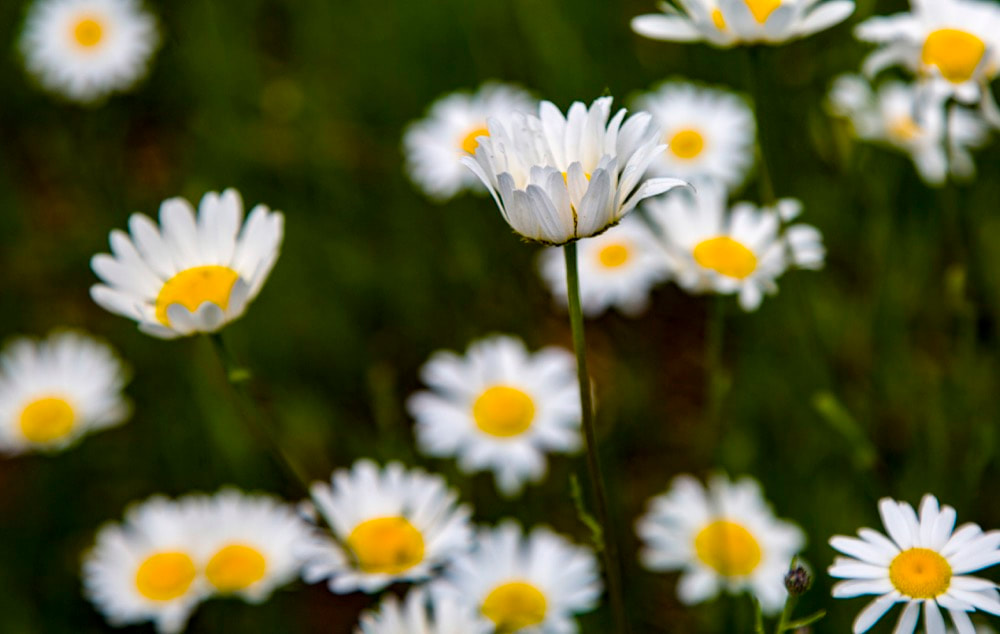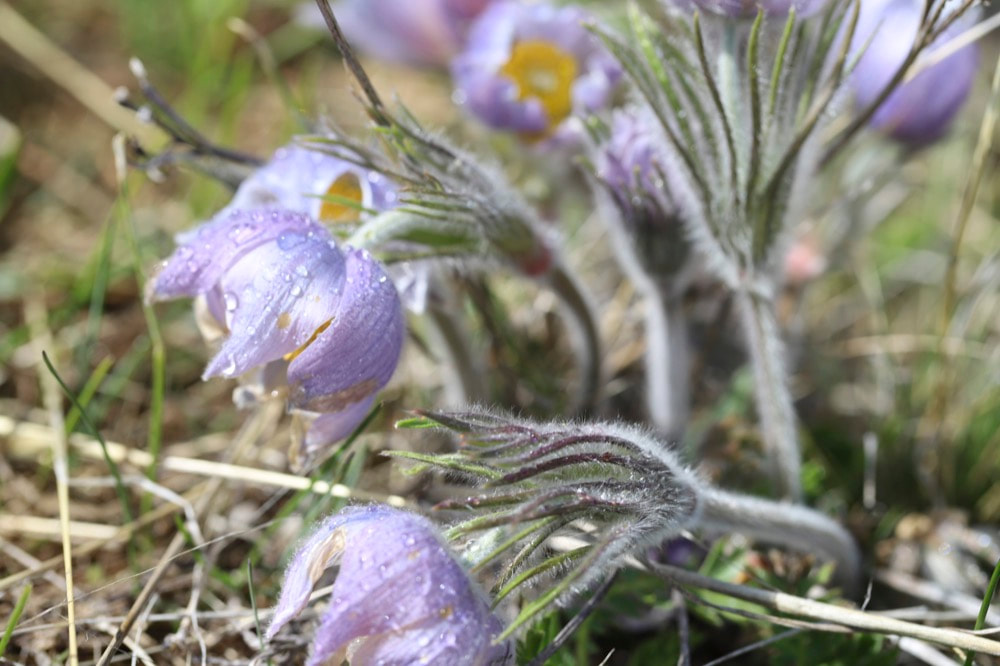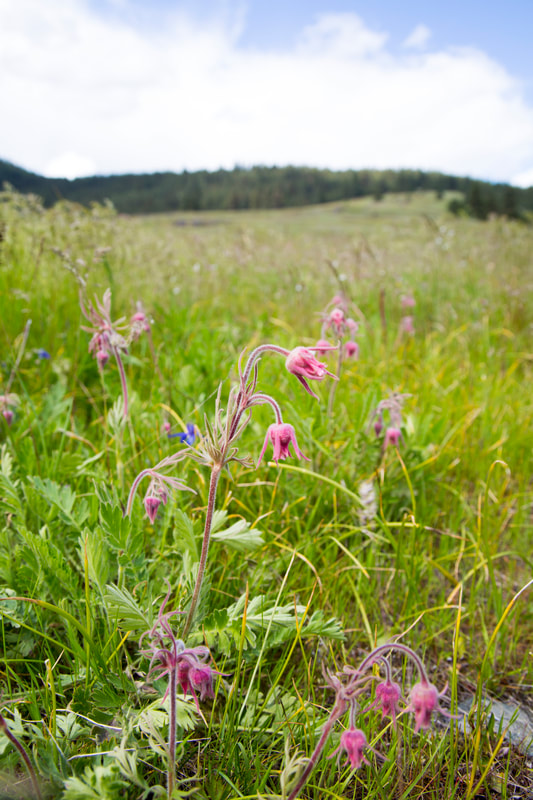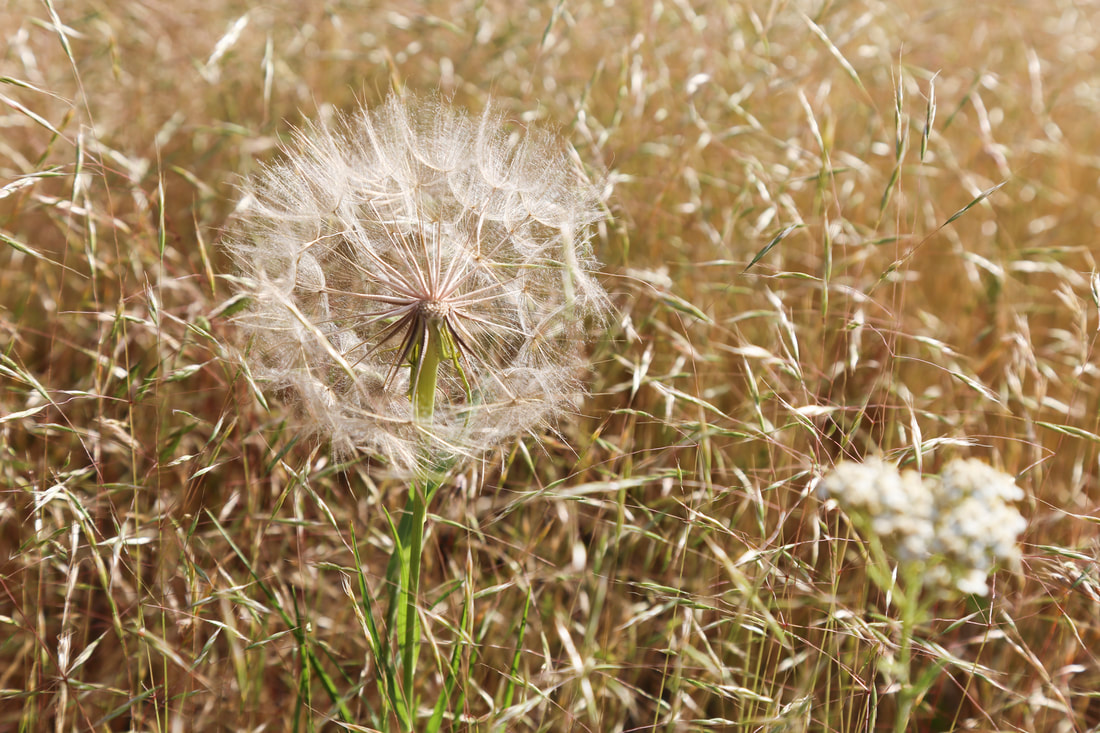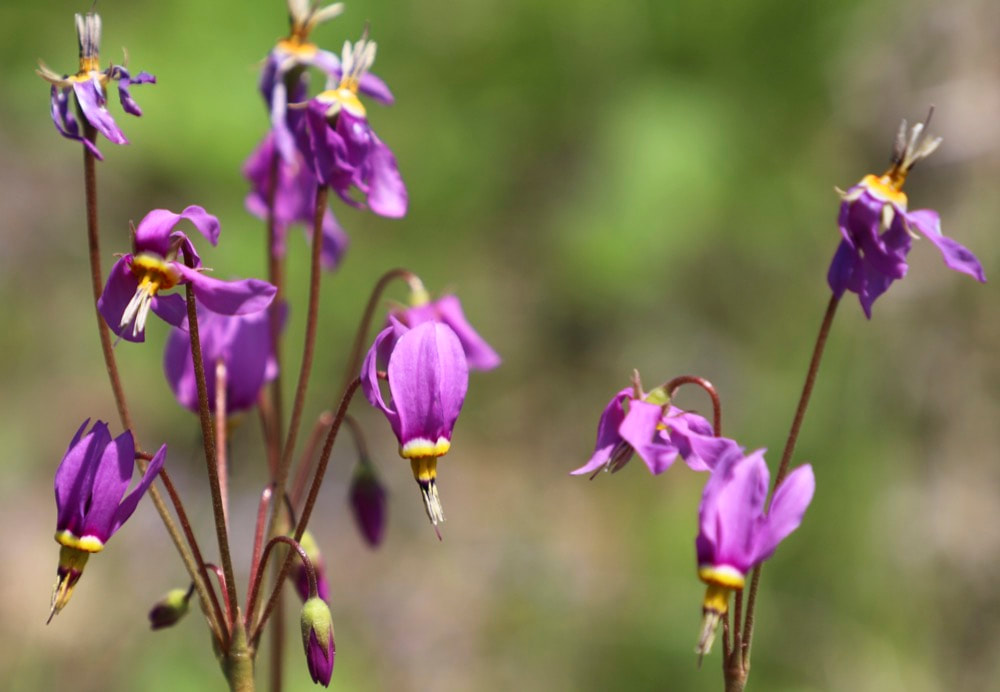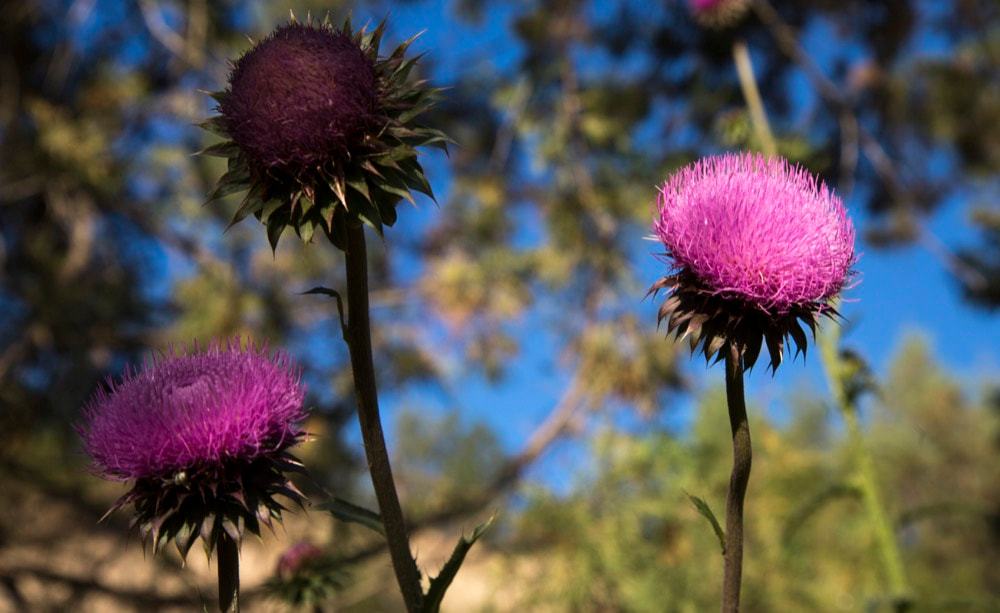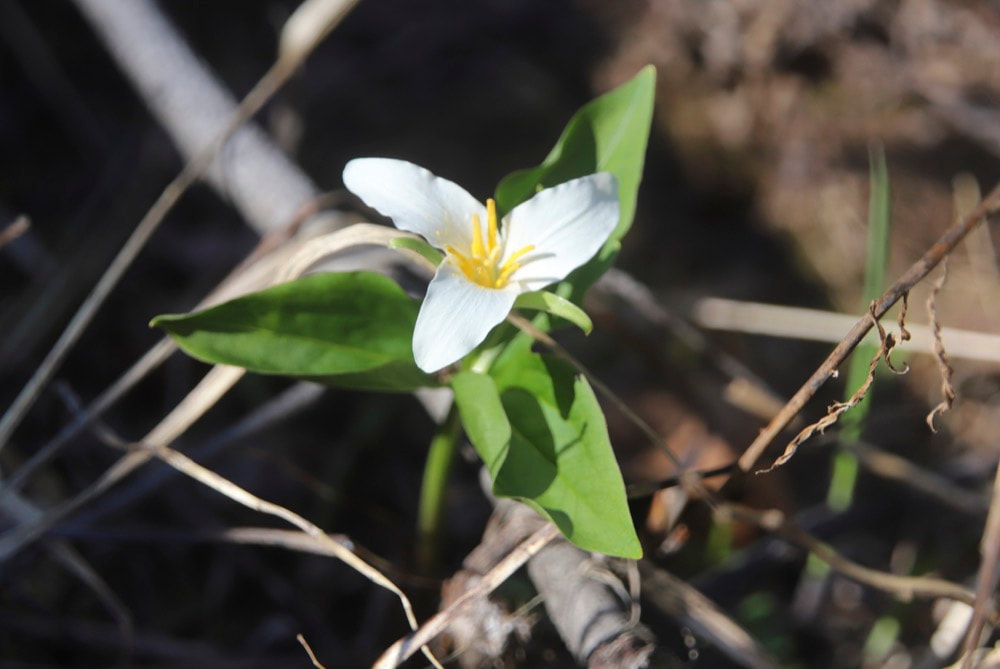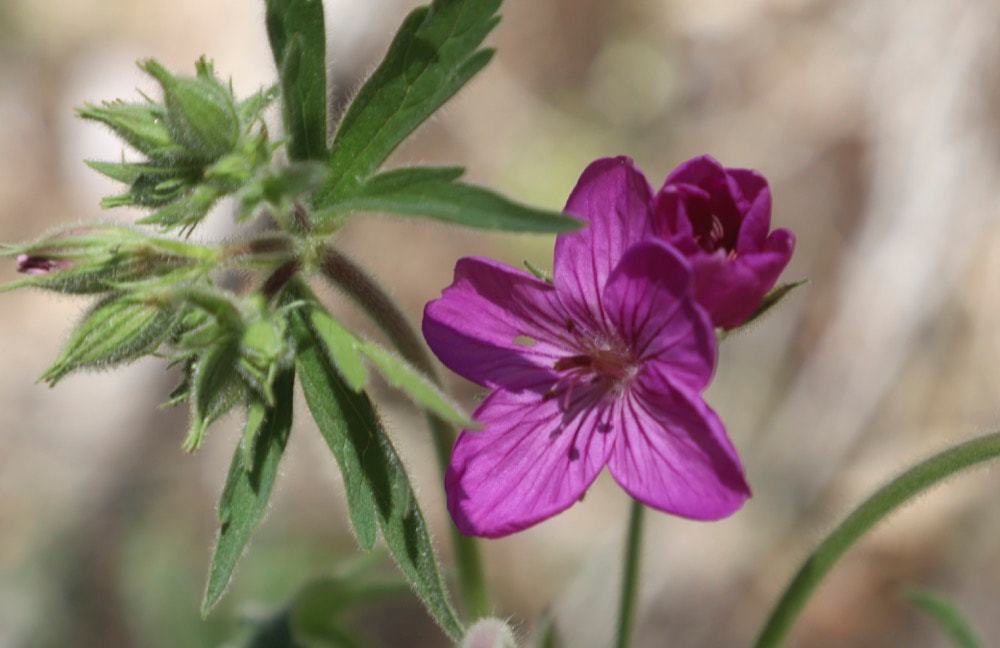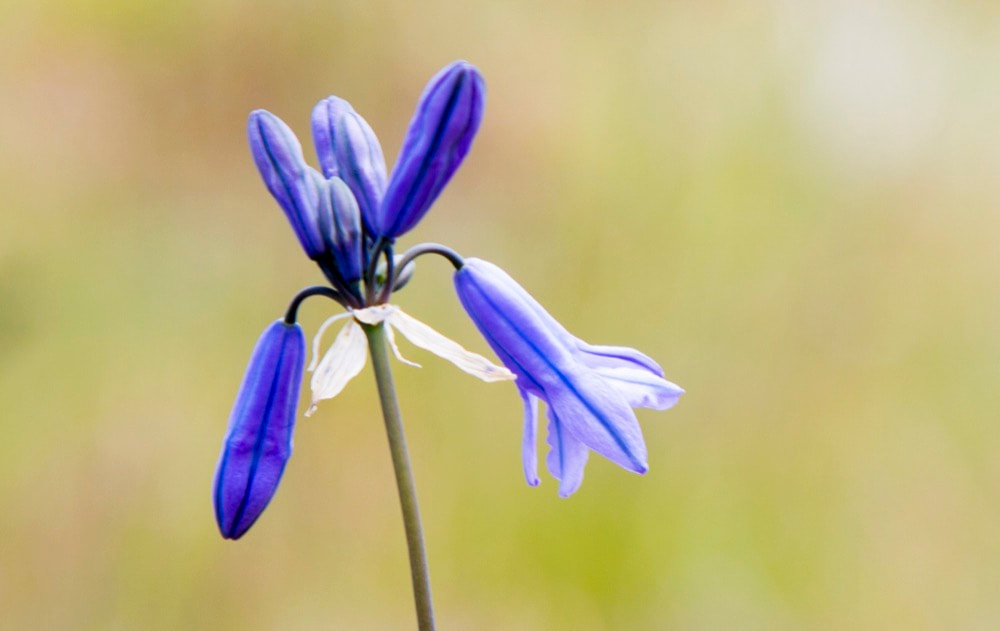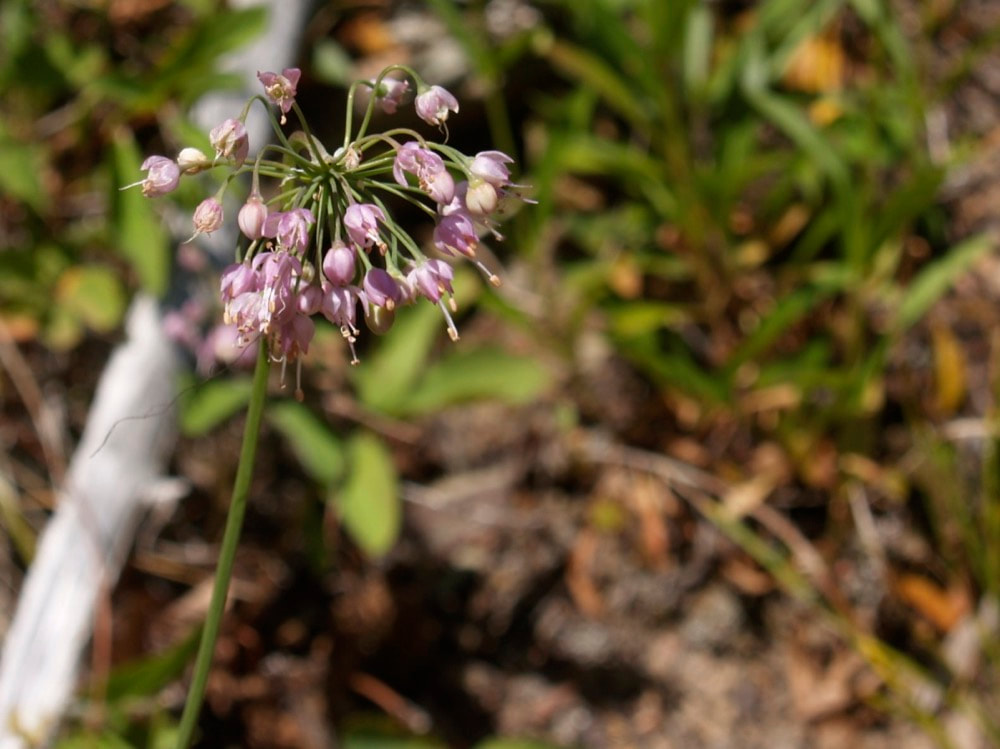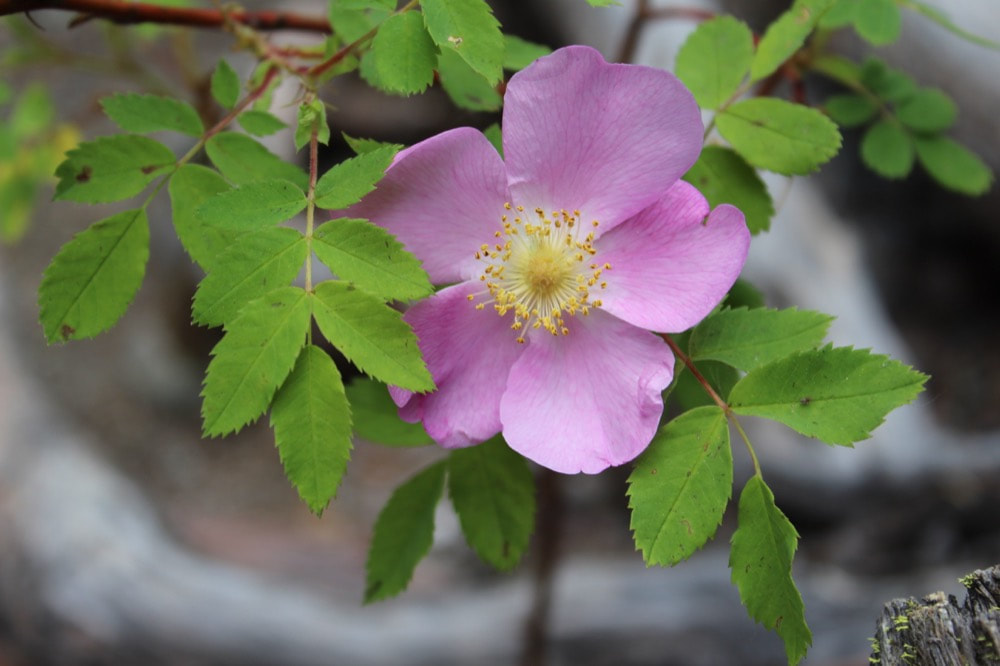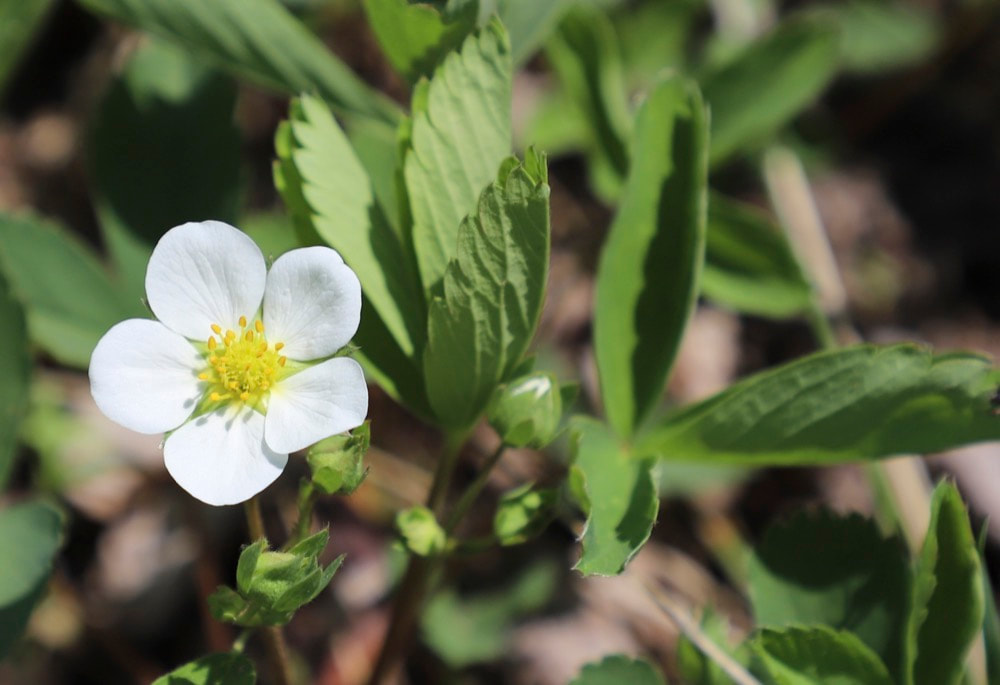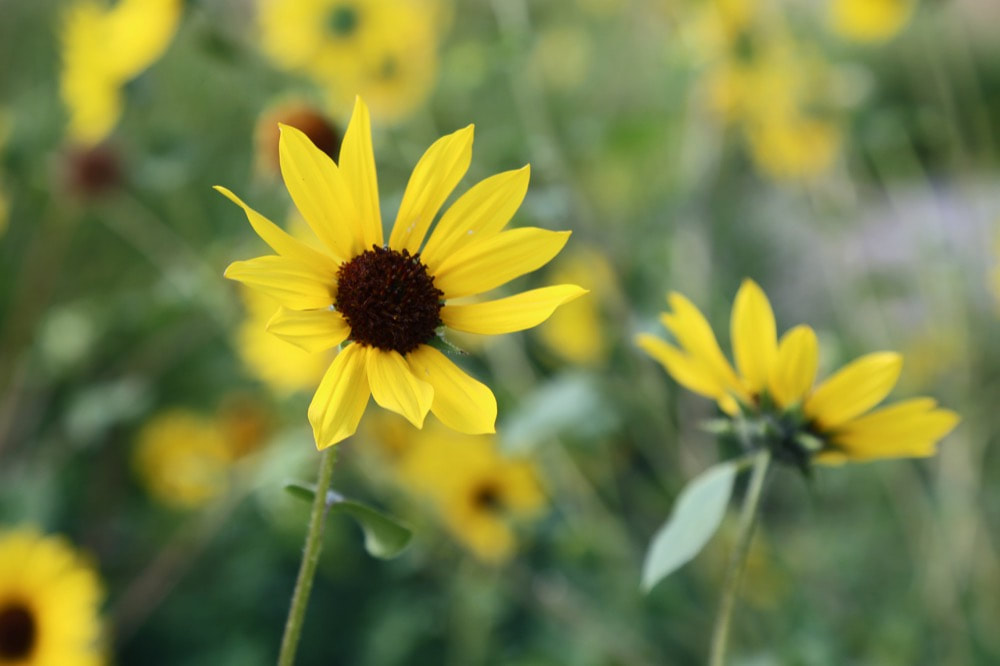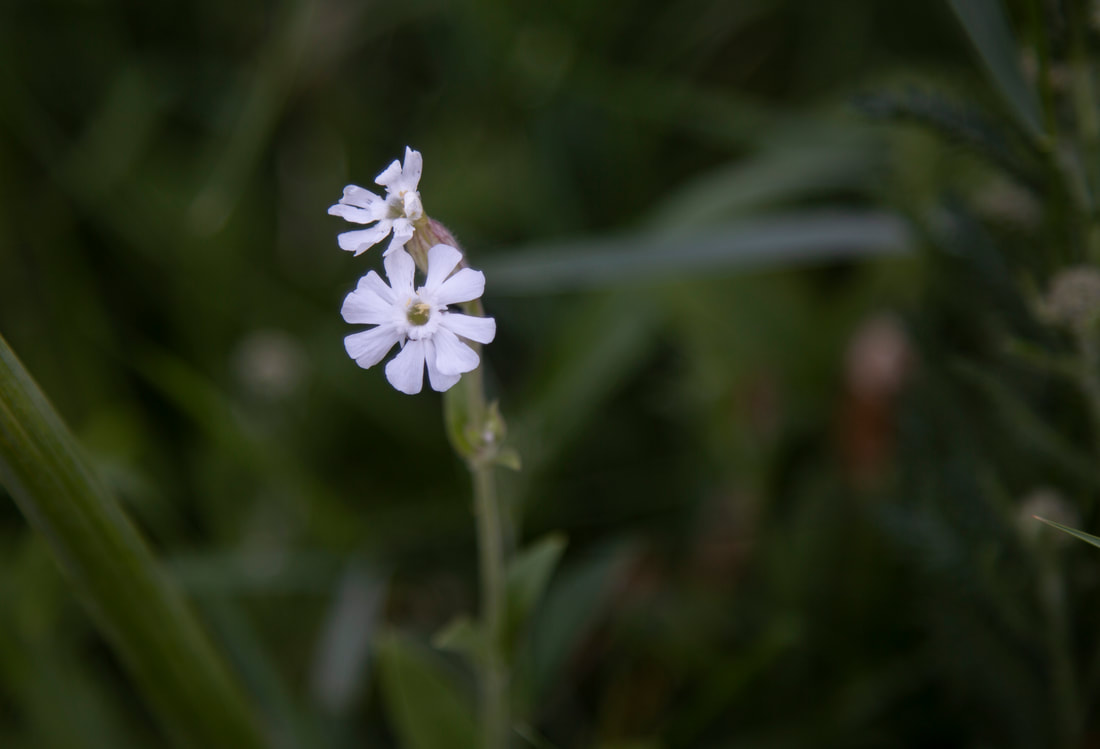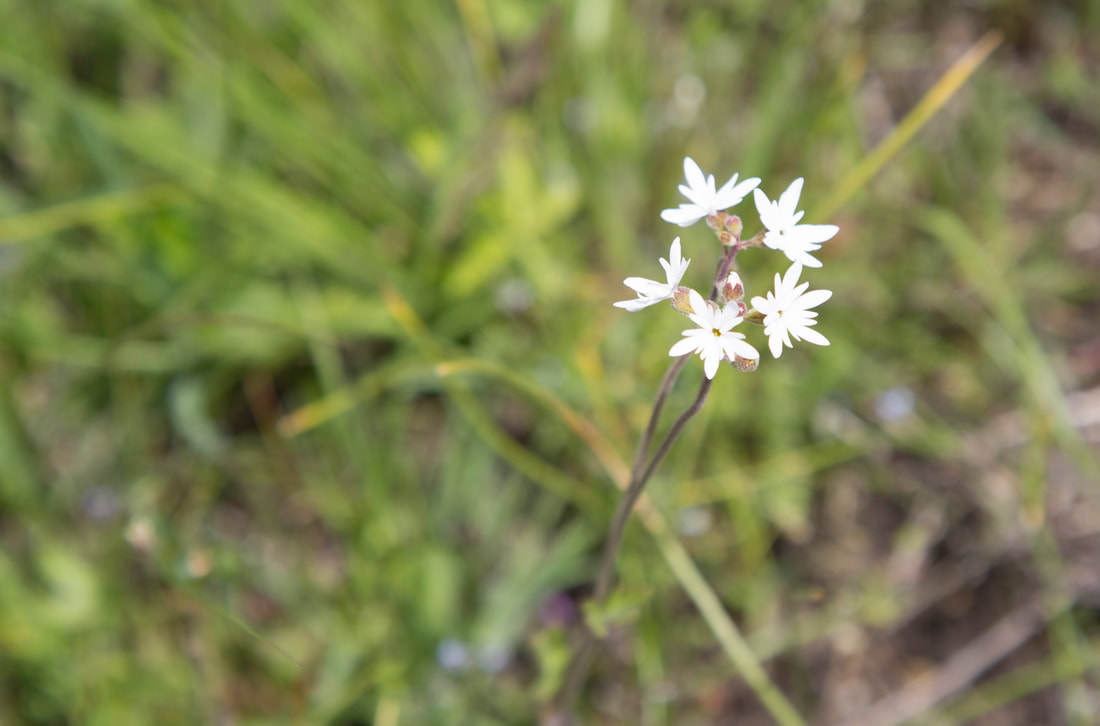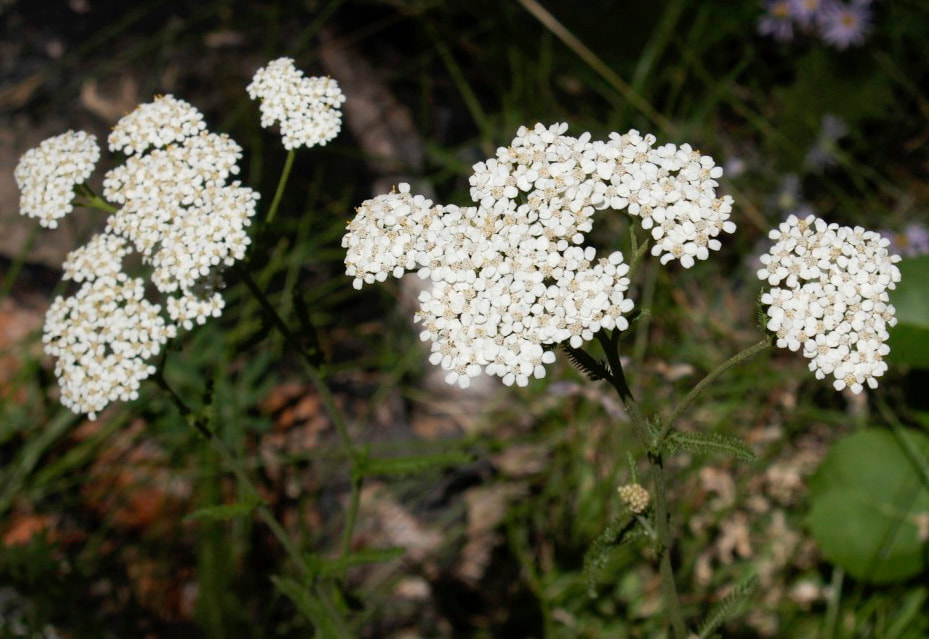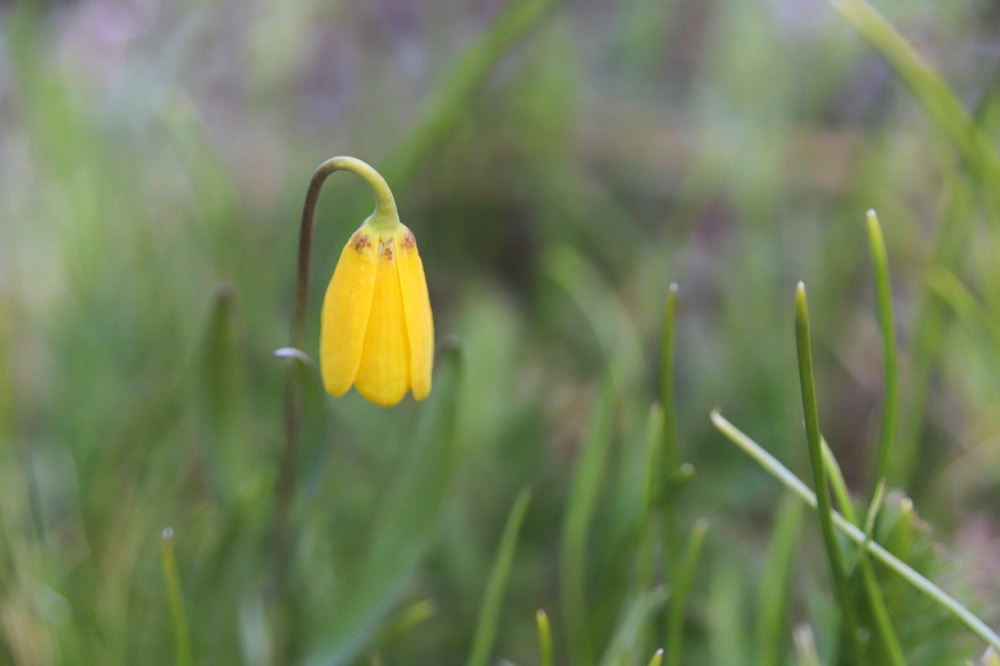I love the abundant wildflowers of my Montana home. My mom and I spend time each summer wandering the trails near our ranch and cataloging the flowers we find there. We have many flower identification books we flip through whenever we find a new one, and I have long wanted a more complete way to show the many stages of a plant than a printed book allows room for. The internet opens up many possibilities in this regard. Thus, I have begun this section of the site, posting pictures and descriptions of the flowers I am acquainted with. I hope this guide is helpful to others who love these plants as I do. (Not that I don't highly value the paper flower identification books. If you want to know which ones I use the most, click here.)
All of the photographs in this section are my photos - using one hobby that I love to further another.
All of the photographs in this section are my photos - using one hobby that I love to further another.
|
Arnica - Arnica montana ( Also know as wolf's bane, leopard's bane, mountain tobacco and mountain arnica). Flowering perennial about 7-24 inches in height. Bright yellow daisy-type flowers with yellow middle. Leaves are oppositely arranged with toothed or smooth edges and are slightly hairy. Flowers between May and August. Common on hillsides with partial shade. Flowers and leaves are medicinal for external use only. Often grows among patches of Arrowleaf Balsamroot and can easily be mistaken for this plant, though Arnica is smaller and more delicate with smaller, more lance-like leaves.
|
|
Arrowleaf Balsamroot - Balsamorhiza sagittata. (Also known as Oregon Sunflower). Flowering perennial. Bright yellow daisy-type flowers with dark orange to brown middles. The leaves are arrowshaped and grow in large clumps with many flowers stalks coming out of each clump. The clumps can easily be a couple feet tall and wide. These plants grow on hillsides or among the undergrowth of conifer forests. They are invasive and can cover entire mountain sides. They grow in full sun and partial shade.
|
|
Bear Grass - Xerophyllum tenax. These unusual members of the lily family grow at medium to high altitudes all over the mountain west. The flower is shaped either like a microphone or like a breast and is made up of hundreds of tiny white flowers. Each flower rises from a woody stalk with sharp, flat leaves clumping up around the stalk. Many clusters often grow together. The flowers are cream in color and 3-5 feet high.
|
|
Bee Balm - Monarda spp. These striking purple flowers Blume in mid July in disturbed roadside areas and hillsides. The flower head is made up of many individual pieces which come together to form a ball of sorts. They tend to be about 2 feet tall and are sometimes called horse mint.
|
|
Bluebells - Mertensia arizonica Greene (Also known as Aspen Bluebells and Alpine Bluebells). Flowers look like trumpets or bells, are blue to light purple and hang off the stalk in clusters which nod in a downward direction. The blossoms are 1/2 inch or more long. The leaves are elliptic or oval and alternate. Each plant can have a single or multiple stems. Stems are 1-3 feet tall.
|
|
Blue-eyed Mary - Collinsia parviflora. A blue flower with some white. Flowers are about 1/8 - 1/4 inch long, very tiny. Looks like a pealed open trumpet with four pealed petals. Can be found along dry roadsides, cliff bases, dry woodlands. These can sometimes cover the forest floor so totally as to make the ground look blue.
|
|
Biscutroot - Lomatium caruifolium. A yellow flower, slightly unusual in shape, which grows out of rocky or sandy ground on hillsides in the mountains. The plant can be up to 1 foot tall. The flowers are tiny yellow peddles arranged in clusters that jut out from the top of the stem in various directions. Part of the carrot family, the root of this plant was traditionally used as food.
|
|
Bitterroot - Lewisia rediviva. This striking flower grows on well drained, gravelly soil in dry shrub-lands often dominated by sagebrush and similar habitats. The flower is bright pink and appears on the ground as if out of nowhere, usually among rocks and often on paths. The flowers are connected to 2-8 other flowers by thick but short stems. The flowers are up to 2 inches in diameter.
|
|
Buttercup, Sagebrush - Ranuculus glaberrimus. One of the earliest flowers to bloom in the spring in the mountain west. You will usually see the tiny yellow flowers appear amongst the detritus of winter in large fields at medium-high altitude in mid to late March. The flowers are small, yellow, daisy-like flowers of bright yellow. They have five separate, yellow, saucer-shaped petals with green or yellow/orange middles. The leaves near the ground are fleshy, and smooth, basal, obovate leafs. The stem leaves (higher up on the plant) are deeply lobed. They grow low to the ground and easy to miss.
|
|
Buttercup, Common - Ranunculus acris L. Often reaching 3 feet in height, with long stems branching out into many flowers. As an invasive species, this plant will often take over whole pastures adn fields, leaving little else in its wake. The leaves a small and thin. The flowers are bright yellow and cup-like.
|
|
Cinquefoil - Sulfur cinquefoil. A perennial 1-1.5feet tall with light yellow flowers. Each flower has 5 petals, each petal is heart-shaped. The center is a slightly darker yellow or orange. The leaves are compound with 5-7 toothed leaflets on each leaf. Often found in disturbed areas such as roadsides and pastures. Flowers occur all summer.
|
|
Deptford Pink - Dianthus armeria. These are tiny, bright pink flowers which rarely occur in great numbers in any one place. They are 1/2-1/3 inch across, with 5 shocking pink petals, dotted white. In the center are 10 stamens with purplish tips. The flowers are solitary or in clusters of 3-6 per stem, occurring at the top or end of a stem in the upper plant. Leaves are thin and long, clustered just under the flower. Stems are green and hairy but can sometimes be a red-brown when flowering.
|
|
Fleabane - Erigeron Philadelphicus. A ragtag looking flower long used to keep fleas and flies away, this common wildflower grows on road sides and disturbed areas.
|
|
Glacier Lilly - Erythronium grandiflorum. These unusual flowers blooms just after the snow melts, typically from early spring through late spring. The flower has 6 curved yellow petals (actually 3 petals and 3 similar sepals) and 6 stamens that protrude from the flower's center. The leafless stems are curved at the top, giving the flower a nodding or drooping look. Normally has two large, shiny, oblong leaves at the base. Found in rich, moist soil along stream banks, in shaded woods and subalpine meadows. Often grows in large patches.
|
|
Goldenrod - Solidago canadensis L. A Perennial growing to heights of 4 feet, the flowers are yellow, borne on numerous small heads with overlapping clusters of yellow petals. Alternate leaves surround the central stems and are gradually reduced upwards. Leaf blades are entire or commonly toothed and have three veins on the upper surface. Grows in disturbed soil along roadsides, streambanks and along ditches. An invasive plant, it spreads through a strong root system which is hard to get rid of.
|
|
Harebell - Campanula rotundifolia L. (Also called bellflower, lady's thimble, witch's thimble, bluebell. ) The flower is a light purple which bloom in the summer and fall. They hang down in a drooping manner and look like bells. Stem leaves are narrow and grass like, but the basal leaves are rather round. The stem is narrow and wiry, normally about a foot tall and can have many flowers branching off of it. The flowers look delicate and papery.
|
|
Indian Paintbrush - Castilleja coccinea. An unusual flower which resembles a paintbrush dipped in bright red paint, this plant is a parasite which cannot be grown except in conjunction with its host plant. The red structures are a type of modified leaf, not petals. These grow in a tuft at the end of a straight stem, normally under 1 foot in height. The stem is also dotted with tiny leaves on alternating sides of the stem.
|
|
Knnickinnick - Arctostaphylos uva-ursi L. Spreng. (Also known as Red Bearberry). A trailing evergreen shrub with paddle-shaped leaves on flexible branches. The thick, leathery leaves, rolled under at the edges, are yellow-green in spring, dark green in summer and reddish purple in fall. Nodding clusters of small, bell-shaped, pink or white flowers occure on bright red stems.
|
|
Larkspur - Delphinium spp. Purple to blue and reaching anywhere from 2 feet to 2 meters in height. These are early to late spring flowers with an unusually notable shape. The flowers grow on the top third of a single or branched stem. Leaves alternate and are divided into deep, narrow lobes. The stem is hollow. These plants are poisonous to livestock.
|
|
Lupine - Lupinus perennis. Showy, elongate clusters of purple or blue (and occasionally pink or white) pea-like flowers top the 1-2 foot stems of this perennial lupine. Flowers are in an upright, elongated terminal cluster on the rerect stem with palmately compound leaves. The leaves are palmately divided into 7-11 leaflets and are generally closer to the ground than the flower stalks.
|
|
Mouse-ear Chickweed - Cerastium fontanum. Tiny flowers appearing in early spring, on 1/2 inch hairy stalks. Each flower is about 1/4 inch across with 5 deeply notched petals and usually 10 stamens with light yellow to greenish or even reddish blue tips. Each petal looks a bit like two ears. Leaves are opposite, toothless, stalkless and somewhat variable in shape. The stems may be erect but typically sprawl along the ground, rooting at the nodes with short, sterile branches crowded around the base.
|
|
Oregon Grape - Mahonia aquifolium. (Also called Holly Grape.) Oregon grape is a common name for members of the barberry family, Berberidaceae.
|
|
Oxeye Daisy - Leucanthemum vulgare. Another invasive species which covers roadsides and meadows all over the mountain west with its beautiful daisy-like flowers. The white petals are thin and grow out fro the middle, which is normally bright yellow or orange.
|
|
Pasque Flower - Pulsitilla patens. An early spring wildflower that features silky, hairy, fern-like foliage and erect, open bell-shaped, solitary blue-violet flowers. Leafless, hairy flower stems emerge from the ground in the spring, sometimes when patches of snow are still on the ground.
|
|
Prarie Smoke - Geum triflorum. An unusual, pink flower that is easy to miss, as it doesn't tend to grow in large patches but is rather scattered individually among wildflower meadows in the west.
|
|
Salsify - Tragopogon porrifolius. (Also called Oyster Root.) This dandilion-like plant has a yellow, dandilion-like flower which turns into a puffball. 3-4 times bigger than most dandelions, it grows from a straight, woody stem in the middle of fields. Its root can be cooked in stews and tastes like oysters.
|
|
Shooting Star - Dodecatheon pulchellum. These striking, small, bright pink flowers look like shooting stars.
|
|
Thistle - Thistle (disambiguation). This ubiquitous plant comes in hundreds of varieties but one common one has pink, rough looking flowers surrounded by spiky leaves at the end of long stems, often 4-6 feet in height.
|
|
Wild Hyacinth - Camassia scilloides.
|
|
Wild Onion - Allium drummondii.
|
|
Wild Rose - Rosa setigera. (Also known as Prarie Rose or Climbing Rose.)
|
|
Wild Strawberry - Fragaria virginiana.
|
|
Wild Sunflower - Asteraceae helianuthus.
|
|
White Campion - Caryophyllaceae silene
|
|
Woodland Star - Lithophragma parviflorm. Flowers are tiny white or light pink things with 3-5 finger-like lobes on star-like flowers.
|
|
Yarrow - Achillea millefolium. A common plant in many climates, Yarrow is a respected medicinal plant in many cultures. It has flat top or dome-shaped clusters of small white flowers that form heads at the top of a stalk. The leaves have a distinctive smell when rubbed between your fingers.
|
